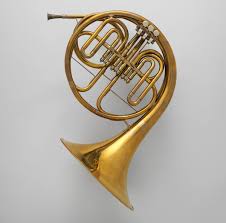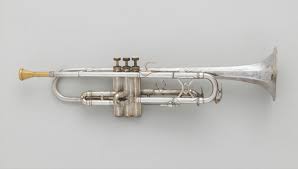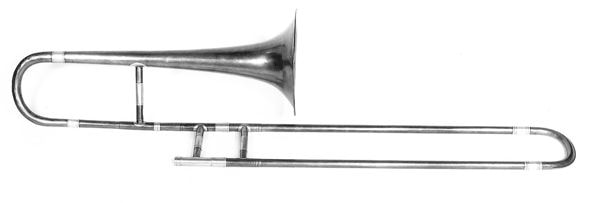Brass Instruments
What are they?
|
Brass instruments are tubes played with the lips and are most often made of brass. They have coiled tubes and valves, and a flared bell in order to project sound. These instruments are descended from horns which were made out of animal horns (1).
How do they Work?
Brass instruments are played by a person blowing air into a mouthpiece, which causes the lips to vibrate and controls the air traveling though the instrument. This means that the tension of the lips and how they are placed on the mouthpiece affect how the instrument sounds (1). The vibration of the lips as well as the air breathed into the instrument cause the instrument to vibrate and the notes to play (7). The mouthpiece has to be sized correctly in order for a person's lips to fit on it comfortably, and the flared bell has to be the correct size to project the sound (1). The amplitude of the sound waves change depending on the amount of air blown into the instrument. Different frequencies are played by pushing on valves, which change the path that the air travels through. The size of the instrument and the amount of tubing and valves affect how many notes can be played and how deep the sound of the instrument are. A shorter tube will result in a higher sound.
|
A horn (Photo Credit)
A hunting horn (Photo Credit)
|
|
Trumpets
The use of the valves on the trumpet allow the length the air travels through the tube to change, which affects the pitch played. The metal pieces can be adjusted when put together to tune the instrument. However, the trumpet can never play perfectly in tune notes, because of how the tube is curved (1). More tubing can also be added to the trumpet to change the range of the pitches able to be played.
|
Trombones
|
The trombone changes pitch by sliding the arm, a more extended arm means the pitch is lower and less extended means the pitch is higher (1). The person playing the instrument has to learn by sound and position what note they are playing and if it is in tune. Fortunately it is easy to correct notes on the trombone using the arm to adjust the note. The trombone can also change notes in a continuous fashion, because it uses a slide instead of valves.
|



